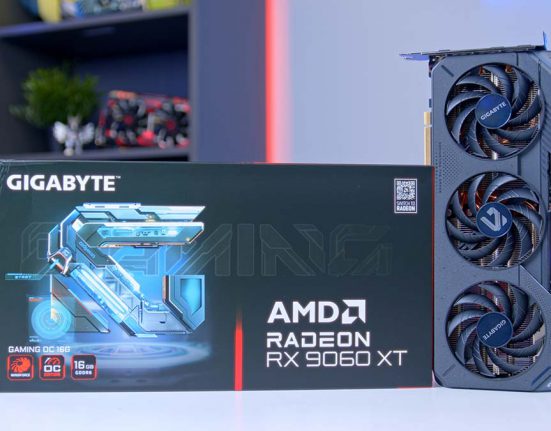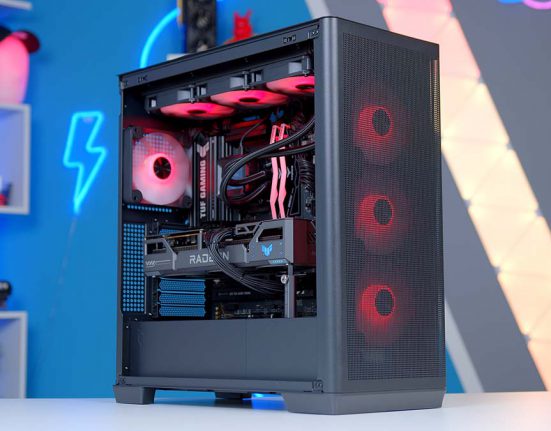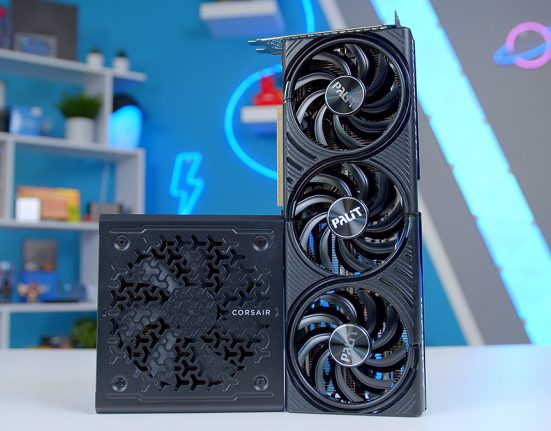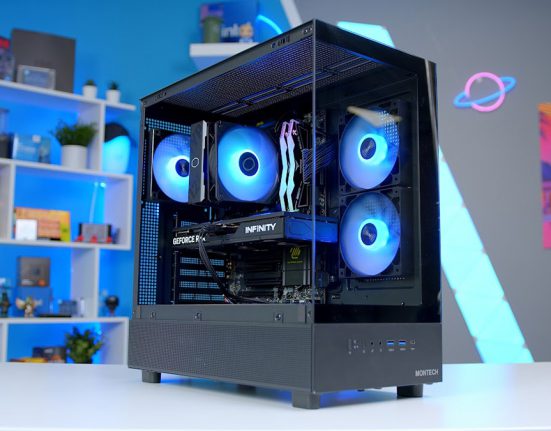Introduction
Intel’s Core i7 13700K is one of the most powerful CPUs on the market right now, making it perfect for a top-end build. During the initial 13th-Gen launch, we were pretty positive about the entire range of new SKUs, as they offered strong generational performance, without compromising on pricing, holding steadfast around the original MSRP of 12th-Gen CPUs.
The Core i7 13700K was one of the CPUs that we kind of forgot about, as it didn’t offer the same performance improvement that the Core i5 did, and it wasn’t as powerful as the Core i9. But looking back, the 13700K is an incredibly compelling option if you’re looking to build a high performance gaming PC, or even a workstation system.
But one main question still stands, which GPU is the best option to pair up with the 13700K? Is the cheap but power titan, the 6950 XT from AMD the best option due to its lower price point? Or is one of the latest NVIDIA cards, the RTX 4080 a better bet for those that want to guarantee all the frames, and the best performance money can buy! In this article we’ll be answering these very questions with a roundup of the best graphics cards to buy for the Core i7 13700K.
Suggested Article: Best Graphics Cards to Buy Under $600 in 2023
Our Recommendations
1. AMD Radeon RX 6950 XT
👑 The best budget top-end card for the 13700K.
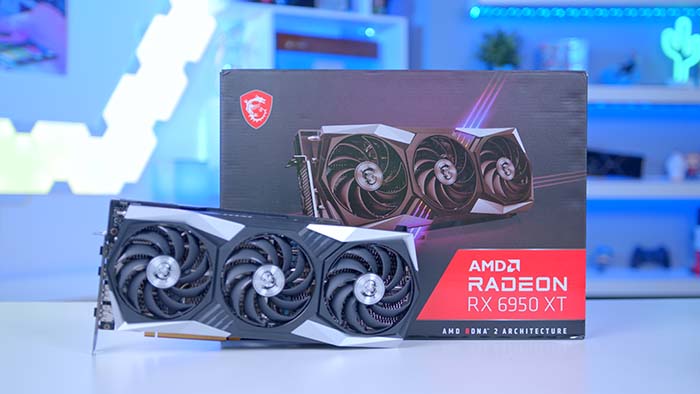
Introduction
First up in our roundup is the Radeon RX 6950 XT, which coincidentally is one of the strongest graphics cards on the market right now, when it comes to value proposition. This particular card is one of AMD‘s strongest cards aside from the 7900 XT and XTX variants. If you’re looking to build a top-end system, either for gaming or a productivity-focused PC, then the 6950 XT is an excellent option to choose. Due to the recent release of the of the new Radeon RX 7600, a multitude of AMD’s older cards have dropped in price, including the 6950 XT, making it a very competitive option versus the alternatives.
Performance wise, the 6950 XT is an exceptionally strong 4K graphics card, with equally solid metrics at a 1440p resolution too. Ray-Tracing performance is pretty decent too, with this card competing against some of NVIDIA’s GPUs. But the biggest win here is the price tag. Consumers can expect to pick this card up for under $600 from certain vendors, with the vast majority of cards sitting under the $700 mark. A definitive choice for those looking to keep their component costs low.
Key Specs
| Key Specs | AMD Radeon RX 6950 XT |
|---|---|
| Video Memory | 16GB GDDR6 |
| Base Clock Speed | 1.89GHz |
| Boost Clock Speed | 2.31GHz |
| Stream Processors | 5120 |
| Ray Accelerators | 80 |
| Power Consumption | 335W |
Things We Like
Reasonably priced: The Radeon RX 6950 XT is one of the more reasonably priced options versus the rest of the market. If you’re looking to pick up a cheaper 4K capable GPU, this card will be a worthwhile option to consider.
Solid gaming and workstation performance: The 6950 XT is one of the strongest graphics cards in the market due to the driver optimisations AMD has pushed over time. Whether you’re building a gaming or workstation system, this card is extremely capable!
Things We Don’t Like
AIBs can be massive: Unfortunately the 6950 XT does have some rather significantly sized AIB models. If you’re building a compact PC you’ll want to make sure your case won’t have any clearance issues.
Uses older hardware: Although the 6950 XT is a solid option, it won’t have all of the ‘bells and whistles’ when it comes to hardware. The Radeon 7000 series will be comparatively stronger versus this Radeon 6000 GPU.
Summary
AMD’s Radeon RX 6950 XT is one of the best priced and strongest options on the market to pair up with the 13700K. Whilst this card isn’t by any means cheap, it is one of the best priced GPUs for those looking to build a 4K capable gaming PC, or top-end workstation. Definitely worth considering this graphics card if you’re trying to keep component costs low.
Features: 4/5
Design: 4.3/5
Performance: 4/5
Value for Money: 4.5/5
Pros
- Strong 4K gaming performance
- Reasonable price point.
- Solid Ray-Tracing capability.
Cons
- AIB models can be quite massive.
- Not as powerful as Radeon 7000 cards.
Where to Buy
Buy the AMD Radeon RX 6950 XT on:
2. NVIDIA GeForce RTX 4070 Ti
👑 The best budget RTX 4000 GPU for the 13700K.
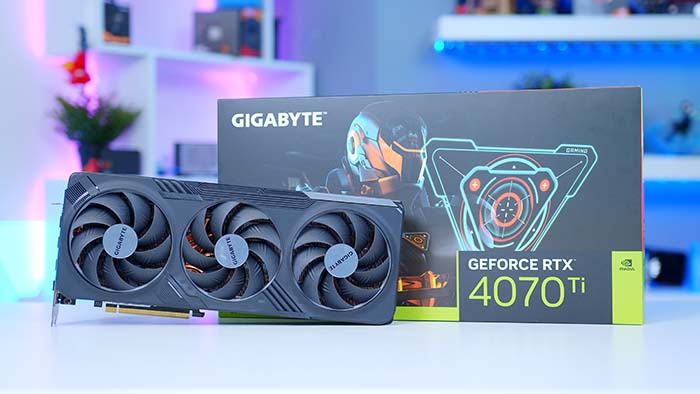
Introduction
Next up is the RTX 4070 Ti from NVIDIA. This GPU is somewhat of a controversial entrant in the market, and was not particularly well received versus other available cards. Whilst I do agree that the 4070 Ti isn’t particularly priced well, if you’re willing to spend a little bit extra, this GPU is a solid option. The RTX 4070 Ti in particular boasts promising metrics in 4K games, and also can handle 1440p with ease. The new RTX 4000 Lovelace architecture also offers excellent performance with Ray-Tracing enabled, which is one of the major benefits of the new RTX 4000 range of GPUs.
Although this card is a big divider of opinion, it is still a rather strong card. The price can be difficult to swallow, but if you’re willing to, then you won’t be disappointed with the achievable performance. And because this card was originally supposed to be an RTX 4080, there are a number of solid AIB models that can be picked up for MSRP providing some better performance and thermals in certain cases.
Key Specs
| Key Specs | NVIDIA GeForce RTX 4070 Ti |
|---|---|
| Video Memory | 12GB GDDR6X |
| Base Clock Speed | 1.92Hz |
| Boost Clock Speed | 2.7GHz |
| CUDA Cores | 7680 |
| RT Cores | 60 |
| Power Consumption | 290W |
Things We Like
Strong 4K performance: The RTX 4070 Ti is a strong 4K capable card, and ideal for gaming. If you’re looking for a graphics card to play your favourite games at 4K with Ray-Tracing enabled, the 4070 Ti is a great option.
MSRP AIB options are solid choices: The 4070 Ti doesn’t have a Founders Edition model, but because of this there are a multitude of MSRP AIB cards that offer strong performance and cooling, which means you won’t have to spend extra to secure a better GPU.
Things We Don’t Like
Priced poorly: The biggest reason why this card was a bit of a flop is down to the poor price. This card isn’t cheap by any means, and you could end up spending $800 or so for certain variants of this GPU.
No smaller Founders Edition: The RTX 4070 Ti doesn’t offer a Founders Edition card, which means the majority of the available options are rather massive. If you’ve got a smaller case, you could potentially struggle to install some of the available variants.
Summary
NVIDIA’s RTX 4070 Ti is a rather controversial card, but a compelling option if you’re looking to play your favourite games at 4K. This card can handle Ray-Tracing with ease and is an ideal choice for consumers looking to pick up a modern option that is somewhat better priced than the current competition.
Features: 4/5
Design: 4/5
Performance: 4/5
Value for Money: 3.8/5
Pros
- Solid 4K gaming performance.
- Can handle Ray-Tracing pretty well.
- AIB cards offer performance and cooling bonuses.
Cons
- Not well priced.
- AIB models are massive.
Where to Buy
Buy the NVIDIA GeForce RTX 4070 Ti on:
3. AMD Radeon RX 7900 XTX
👑 The best top-end AMD card for the 13700K.

Introduction
Next up is the 7900 XTX from AMD. This graphics card is the direct competition to some of NVIDIA‘s earlier SKUs within the RTX 4000 range such as the RTX 4080 and 4090. Whilst the Radeon 7900 XTX can’t quite keep up with NVIDIA when it comes to Ray-Tracing, it will certainly give the majority of the top-end SKUs a run for their money. This card is AMD‘s most powerful graphics card right now, and is a worthwhile consideration for those looking to amp up the power of their build, but save a little bit of money too, as the pricing of this GPU is somewhat more competitive overall.
The 7900 XTX is definitely not a cheap graphics card by any means, but if you’re looking to save some money versus the competition, then I’d argue that this is a great option to choose. This card can handle pretty much anything you throw at it, it is perfect for top-end workstation systems that deal with complex workflows, or just 4K gaming with maxed out settings.
Key Specs
| Key Specs | AMD Radeon RX 6950 XT |
|---|---|
| Video Memory | 24GB GDDR6 |
| Base Clock Speed | 1.85GHz |
| Boost Clock Speed | 2.5GHz |
| Stream Processors | 6144 |
| Ray Accelerators | 96 |
| Power Consumption | 355W |
Things We Like
Competitive pricing: The price of this GPU is not low by any means, but when compared against the competition, the 7900 XTX undercuts NVIDIA’s very own 4080 and offers extremely similar performance metrics.
Exceptional performance: Speaking of performance, the 7900 XTX is one of the most powerful GPUs on the market. This card will be able to handle pretty much anything you throw at it, making it ideal for a top-end system.
Things We Don’t Like
Can’t compete when it comes to Ray-Tracing: Although the 7900 XTX is a solid card overall, it does fall flat when it comes to Ray-Tracing performance. If you’re wanting to max out this setting in all of your favourite games, there are stronger options better suited to Ray-Tracing.
Still quite expensive: Unfortunately, although this card undercuts the RTX 4080, it is by no means a cheap card. The 7900 XTX can easily set you back over $1000, making it rather expensive option to choose.
Summary
AMD’s Radeon RX 7900 XTX is an incredibly strong option versus the competition. Although this card is definitely expensive, and does somewhat fall flat when it comes to Ray-Tracing, it is still a worthwhile option for consumers looking to pick up a top-end GPU to pair up with 13700K for a somewhat reasonably price point.
Features: 4/5
Design: 4.3/5
Performance: 4.6/5
Value for Money: 4.3/5
Pros
- Solid 4K gaming and workstation performance.
- Better pricing than the RTX 4080.
- Smaller cards compared to the RTX 4000 series.
Cons
- A very expensive card.
- Can’t beat out NVIDIA when it comes to Ray-Tracing.
Where to Buy
Buy the AMD Radeon RX 7900 XTX on:
4. NVIDIA GeForce RTX 4080
👑 The best top-end card for the 13700K.
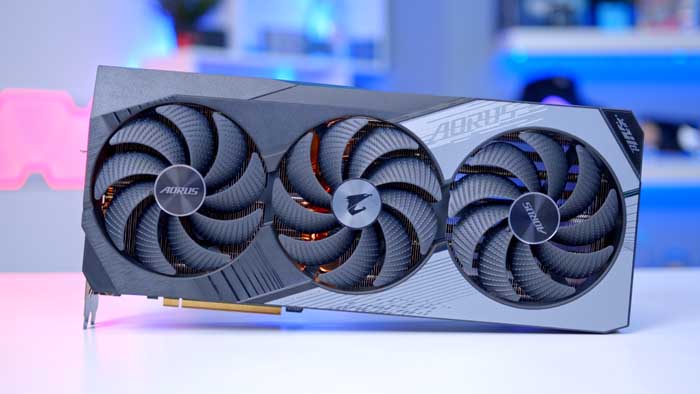
Introduction
For our final graphics card recommendation, we’ve picked out the RTX 4080 from NVIDIA. As we’ve alluded to above, this GPU is the direct competitor to the Radeon 7900 XTX and is one of the most powerful cards on the market when it comes to either gaming or productivity workloads. The 4080 can handle pretty much anything you throw at it, and is one of the strongest cards when it comes to Ray-Tracing performance too.
Unfortunately, the biggest caveat here is the price. Much like the RTX 4070 Ti, this GPU just wasn’t priced right, and was over double the cost versus the original RTX 3080, making it one of the most expensive GPUs to date. Although I’m a big believer in the performance of this card, the pricing is very difficult to swallow, and definitely not geared toward the budget side of the market.
Key Specs
| Key Specs | NVIDIA GeForce RTX 4080 |
|---|---|
| Video Memory | 16GB GDDR6X |
| Base Clock Speed | 2.21GHz |
| Boost Clock Speed | 2.51GHz |
| CUDA Cores | 9728 |
| Power Consumption | 320W |
| RT Cores | 76 |
Things We Like
Insane performance metrics: The RTX 4080 is one of the most powerful GPUs that you can buy aside from the RTX 4090. If you’re looking for top-end performance, this card will not disappoint.
Exceptional thermals: The top-end RTX 4000 SKUs are some of the most thermally capable graphics cards too. Even the Founders Edition variant offers strong temperatures under complex loads.
Things We Don’t Like
Very expensive: As I’ve mentioned above, this card is not cheap. The RTX 4080 is about double the price of an RTX 3080, putting it around the $1200 mark, which is a lot to spend on one component.
The cards are massive: The RTX 4080 is one of the biggest SKUs when it comes to GPU length. If you’ve got a smaller case, or you’re building a compact PC, you might want to look at other options.
Summary
NVIDIA’s GeForce RTX 4080 is one of the best cards for enthusiasts and consumers looking to build a top-end gaming or productivity focused PC. Although this GPU is very very expensive, you won’t be disappointed when it comes to the performance metrics.
Features: 4/5
Design: 4/5
Performance: 4.7/5
Value for Money: 3.9/5
Pros
- Excellent performance across the board.
- Strong thermal capability.
- Perfect for a Ray-Tracing gaming PC.
Cons
- Extremely expensive.
- Card size may cause case restrictions.
Where to Buy
Buy the NVIDIA GeForce RTX 4080 on:
Is the Core i7 13700K Good For 4K?
4K gaming is starting to become more popular and widely available for consumers across the market. With graphics cards becoming increasingly powerful from both AMD and NVIDIA, now is an excellent time to build a PC, pick up a 4K monitor and start playing some 4K games. But a major question still stands, what kind of CPU do you need to play games at 4K? Is a top-end option like the 13900K required, or can you pick up something lower-end such as a Ryzen 5000, or Ryzen 7600X processor?

Luckily, when it comes to 4K, your CPU isn’t actually that vital. Admittedly, you’ll need a modern CPU that can at least handle the performance requirement that 4K gaming poses, but this means you’ll have a vast set of options. A 4K resolution isn’t actually that demanding on your CPU compared to your graphics card. If we dumb the resolution down to 1080p, things do start to change, but your GPU is much more important comparatively at high resolutions to ensure you can play your favourite games at reasonable framerates.
With concerns to the 13700K, consumers shouldn’t need to worry about the longevity or overall performance of this CPU at a 4K resolution. Based on the specs alone, we can easily ascertain that the 13700K should be able to handle 4K without any issues, and the stronger performance of this CPU will allow you to enjoy high framerates and refresh rates too!
Do I Need PCI-E 5.0?
The new standard of bandwidth is a big question on everyone’s minds when it comes to graphics cards, especially as the price of PCI-E 5.0 compatible motherboards can be hefty in certain cases. So do you need PCI-E 5.0 for any of these graphics cards? Fortunately, you don’t, but you might. All of NVIDIA‘s and AMD‘s graphics cards currently use the PCI-E 4.0 standard for bandwidth, which means that your older Ryzen 5000 motherboard, or your Intel B660 option will be perfectly suitable for any of these GPUs.
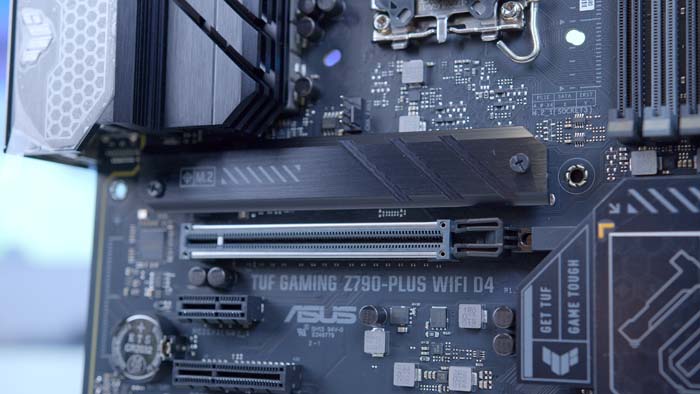
But as we move into the future, the standard is definitely going to change. It is highly likely that the next generation of graphics cards will require a PCI-E 5.0 slot in order to run optimally, to ensure stronger performance. This effectively means that if you plan on upgrading within the next year to the newest graphics cards, you may find yourself picking up a new motherboard too. Ultimately these are mostly rumours and speculation thus far, but it doesn’t make a whole lot of sense for AMD and Intel to place this new technology on motherboards to then not use it.
Why You Can Trust Us
At GeekaWhat we have a dedicated team of PC hardware enthusiasts that have a huge passion for testing and benchmarking all of the latest components that we get in the office. Our writing and benchmarking team are always testing and evaluating the latest products to provide our audience with a concrete overview of each component, noting their strengths and weaknesses. If you’re interesting in learning more about our team and our editorial promise, check out the About Us section.
How We Tested the Best Graphics Cards for the Intel Core i7 13700K
In order to test and evaluate the best graphics cards for the 13700K, there are a number of factors that we take into account, these are:
- Gaming Performance
- Workstation Metrics
- GPU Length
- Value for Money
Conclusion

Best Graphics Card for the Intel Core i7 13700K: AMD Radeon RX 6950 XT
Finishing our roundup, we’ve picked the AMD Radeon RX 6950 XT as the best GPU to pair up with the 13700K. This graphics card is very reasonably priced right now, has a mass of VRAM, can easily handle 4K gaming, and will be perfect for a workstation graphics card. There are a few options that do perform better than this GPU, but I’d say that the price tag attached to this beast will be the big decider for most consumers.
Read our full AMD Radeon 6000 coverage , or Buy the AMD Radeon RX 6950 XT on Amazon
Frequently Asked Questions

Is 13th-Gen Compatible with 12th-Gen Boards?
Yes they are. If you’ve got a 12th-Gen board, all you need to do is update the BIOS and you should be able to get your PC setup without any issues.

How Many Cores Do I Need for Gaming?
As a general rule, most games only ever use one or two cores for gaming. This means you can get away with picking up a cheaper CPU if you’re just playing 4K games.

Do I Need ATX 3.0?
No you don’t. Although NVIDIA RTX 4000 cards use the new standard, all GPUs should come with adapters that work with older power supplies.

Is the 13700K Good as a Workstation CPU?
Yes it is! The high core count and clock speed makes it ideal for workstation applications that require more cores for their workloads.




